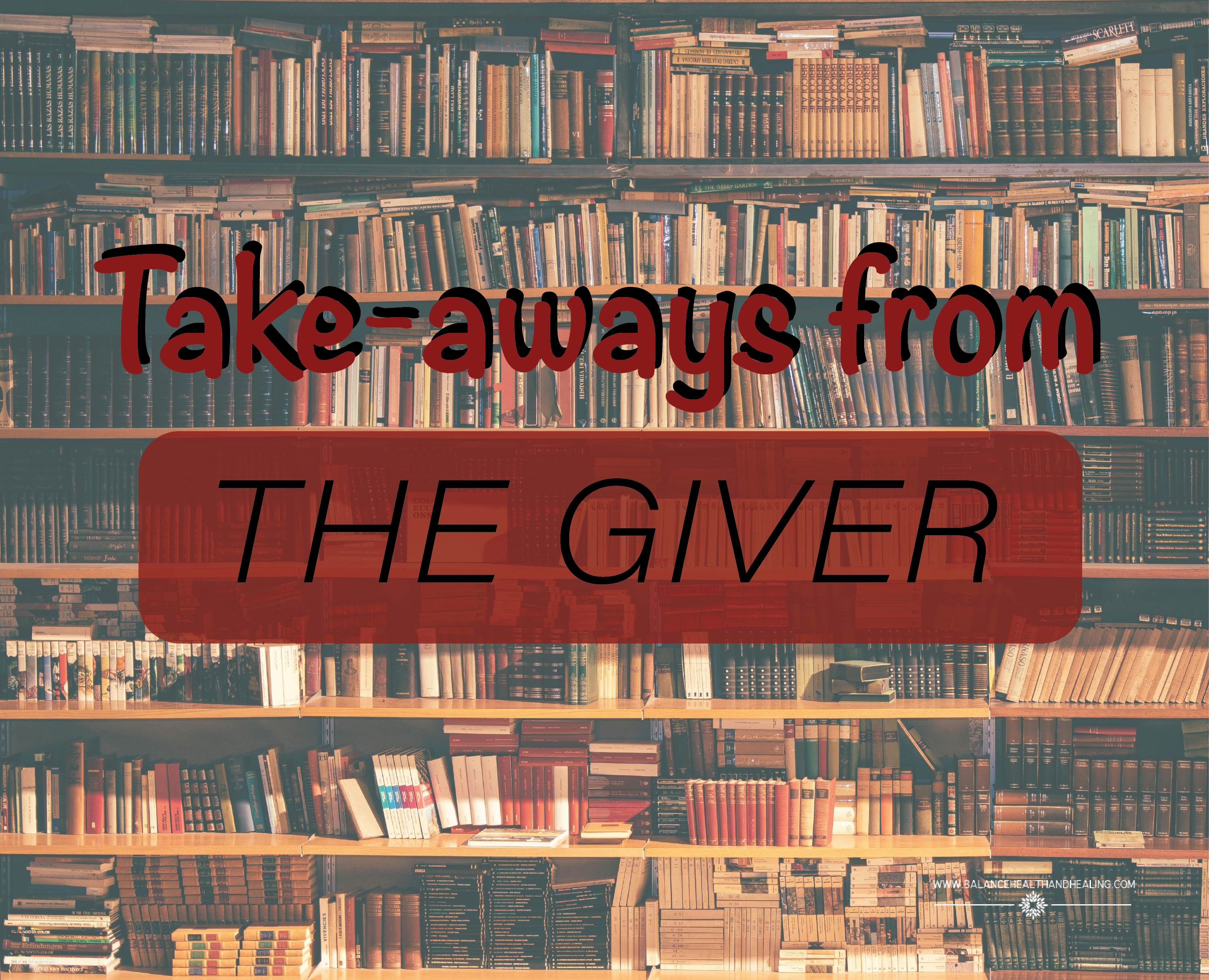Somehow I missed reading, The Giver by Lois Lowry, in middle school, when most people read it for English class. But better late than never! I devoured The giver in two days over the holiday break. While I’m sure it makes for great YA reading, I am glad I read it, now, as an adult. I haven’t been able to stop thinking about the book and it’s themes since. Some important themes stand out and relate to how I view the world and why I chose to be a therapist.
Book Summary
The Giver is set in an ambiguous future time period where citizens and their community have chosen “Sameness” as the panacea to all of life and society’s ills. How they achieve this Sameness isn’t explained, but as you read, you realize that the way they live and structure their lives comes with a cost. While, true, no one experiences pain, no one also experiences any other emotions. Or if they experience emotions, those emotions are muted. There is no joy. There is no real love or depth in relationships. There is caring between people and citizens but no real connection. Indeed, there is no color or music!
When he turns 12, the main character, Jonas, receives his appointment to be the new “Receiver.” This is an honored position but also not one anyone wants or even understands.
Jonas begins training to be the Receiver from the wise, old, current Receiver, who instructs Jonas to call him the Giver. The Giver then begins transmitting memories to Jonas. These memories are several life-times worth of memories and as far reaching as the casualties of war, to the joy of a sled ride in deep snow. With these memories, Jonas is awakened to entirely new way of seeing and being in the world. He experiences joy and also deep sorrow. He experiences pain and suffering and learns empathy and love. As he changes through these experiences, he begins to question if Sameness is what is in the best interest of humanity. He and the Giver construct a plan to change their community through re-introducing memories (and all their accompanying emotions) to the citizens. Of course their plan is foiled and the plot takes on twists and turns, leading to an intense ending, but I want to talk about why this book struck me so deeply.
In the book, you learn that the Giver is emotionally and physically worn down carrying all these memories and emotions by himself. He experiences physical pain as part of this burden. He experiences isolation and loneliness. He does not want to cause Jonas pain through transferring these memories to him, but in the process of doing so, the Giver is relieved of his own suffering.
My Take-aways
This made me reflect on what I feel is sacred work with clients. While there is a lot more to therapy than being a good listener, I do believe in the power of witnessing, supporting, and sharing the burden that clients carry with them. I witness, over and over, how sharing painful experiences, expressing hurt and other difficult emotions, in the safe, nonjudgmental space, provides relief. There is research that backs up the value of sharing experiences, either with other people as well as through journaling. Sharing helps process those experiences, allowing the associated painful emotions to move through us.
listener, I do believe in the power of witnessing, supporting, and sharing the burden that clients carry with them. I witness, over and over, how sharing painful experiences, expressing hurt and other difficult emotions, in the safe, nonjudgmental space, provides relief. There is research that backs up the value of sharing experiences, either with other people as well as through journaling. Sharing helps process those experiences, allowing the associated painful emotions to move through us.
Jonas questions why the community can’t share the burden of all these memories and the Giver tells him that the last time that happened, the community was overwhelmed and couldn’t handle it.
While we don’t live in a community of “Sameness” there are so many ways in which people and our society avoid pain and suffering. We are masters of distraction. We are masters of disconnection. We are masters of minimizing our own emotions and those of others. Leaning into discomfort is…well uncomfortable. We don’t like doing it so we learn strategies to avoid it.
Ironically this increases our own suffering as well as the suffering of those in need of support and empathy. When I lost my son, I quickly learned who could tolerate and witness my pain, and those who couldn’t. There were far fewer people who could lean into discomfort and far more people who moved emotionally away. I do not harbor any anger or even disappointment in those who distanced themselves from us. I do not blame them. Our experience is a heavy one to witness.
And yet, what if we, as a society, learned that avoiding pain, and avoiding witnessing pain, isn’t the answer? What if we learned that experiencing life head-on, with whatever experiences came our way, leads us to a richness of experience we didn’t know was available before? That pain doesn’t lead to undoing; it actually invites depth, richness, color and music and FEELING. It builds strength, resiliency, empathy, and humanity!
In turn, the less we avoid our own pain, the more we can tolerate and witness the pain of others, leading to deep empathy, communal connection and relief. What if our growth curve, as a community, is to learn to lean into discomfort and witness with our fellow humans? Shared all together, the burden is light.

